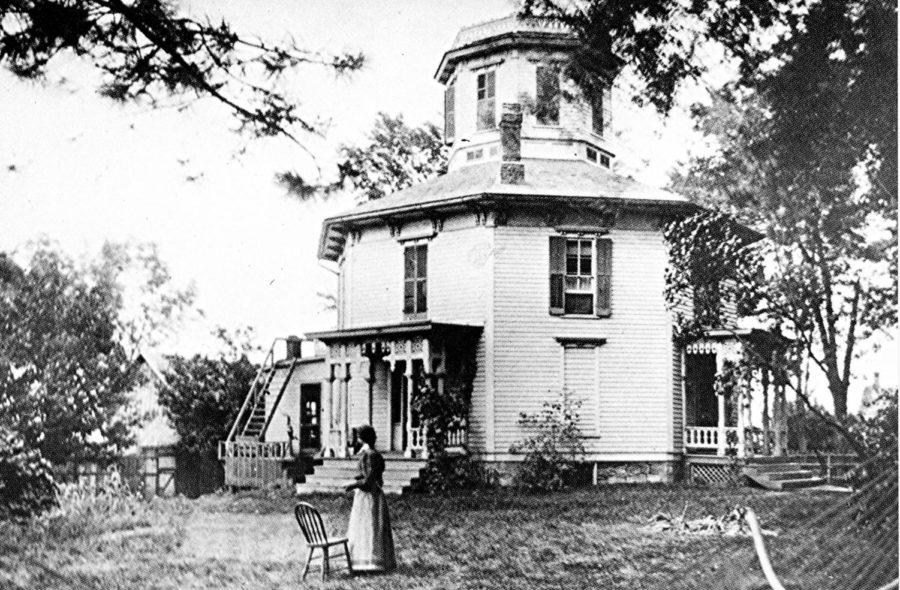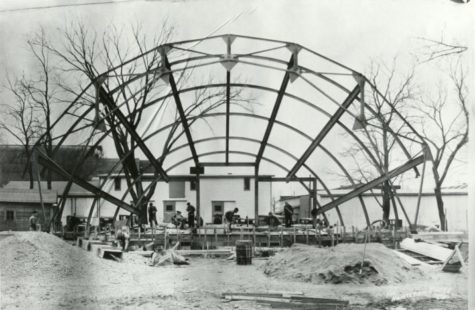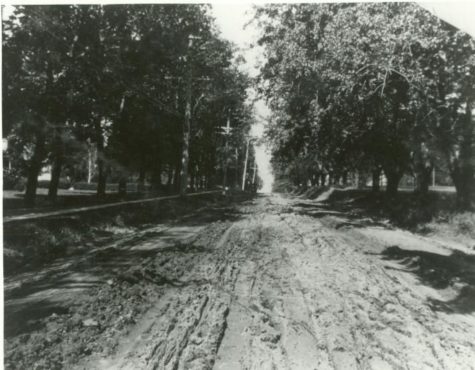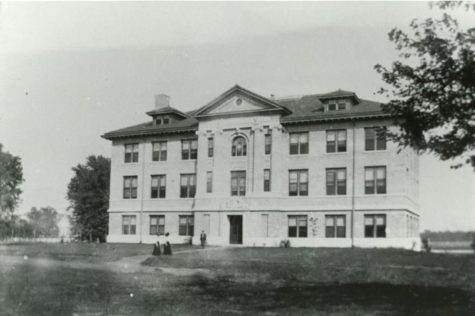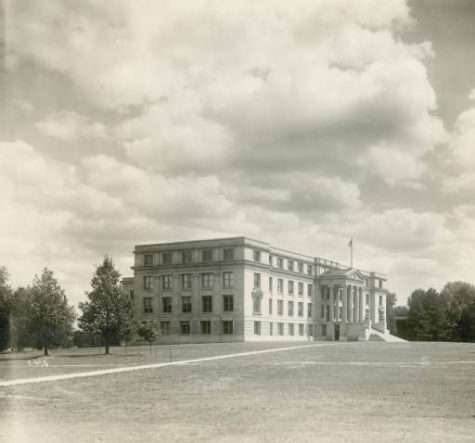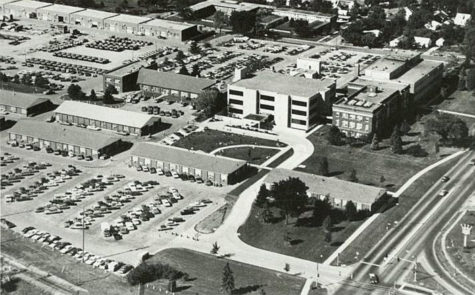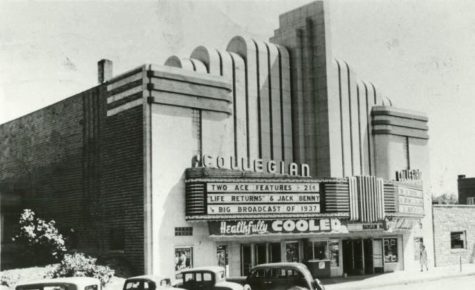Octagonal house gives name to art center
Courtesy of Octagon Center for the Arts
The original octagon house before modification when it was inhabited by Dr. Starr. The Octagon Center for the Arts began in this 100-year-old house that was one of nine octagonal houses in Iowa. Though the house no longer stands, its name continues on Main Street.
July 23, 2014
Editor’s note: In celebration of the 150th anniversary of our city, the Daily will highlight prominent figures, places or events in Ames’ history each week.
The doors of a minuscule 100-year-old house reopened on January 23, 1966, with a new purpose.
The Ames Society for the Arts needed a place to teach and exhibit art to the community, so they placed the Octagon Center for the Arts inside the home. On that Sunday afternoon, 700 people gathered at the dilapidated, asbestos-covered home for the opening, according to the center’s website.
The house itself — built after the Civil War by a physician and amateur astronomer named Dr. S.J. Starr — was one of only nine octagonal houses built in Iowa. Octagonal houses, though more efficient in heating and lighting, never became popular in the Midwest.
For his observatory, Dr. Starr built a cupola on the top of his house. Standing alone on the prairie, it was one of the first houses built around Ames in 1865, according to a Des Moines Register article from 1966. He had a successful medical practice and was well-respected around Ames. Starr retired young and didn’t leave the house until 1900.
By 1965, it was a student apartment. One day, three women arrived at the house and began peering in windows and knocking on the door. The students, concerned, came downstairs. The women were looking to set up the Society for the Arts in their house, which was perfect for its needs. The society women bought the house and opened the Octagon Center for the Arts that winter.
Though the old cupola had been torn down and the prairie was long gone, Starr’s old octagonal house influenced the Society for the Arts. It moved out in 1968 because the original house was much too small.
After leaving the original building, the Octagon Center for the Arts found itself in the second story of a Main Street business, according to the Ames Historical Society. It moved again in 1973 to the basement and first two floors of the Masonic building. The Freemasons left the third floor of the building in 1978 and in 1980, the Octagon spent $200,000 on renovations and remodeling.
The Octagon Center for the Arts is still there and still named for the little building that rose from the prairie, built to “satisfy the astronomical whim of Dr. Starr,” according to “Iowa: A Guide to the Hawkeye State.” The little building, however, was burned down in 1982 by the Iowa State Fire School for practice in fire-fighting.
Today, the Octagon Center for the Arts serves over 30,000 people annually, according to its website. The organization educates the Ames community about art through classes, outreach programs, exhibits and special events including an art festival held every year in September in downtown Ames.

